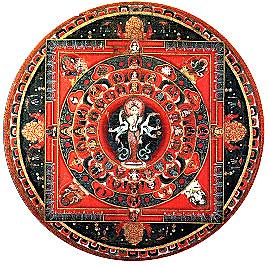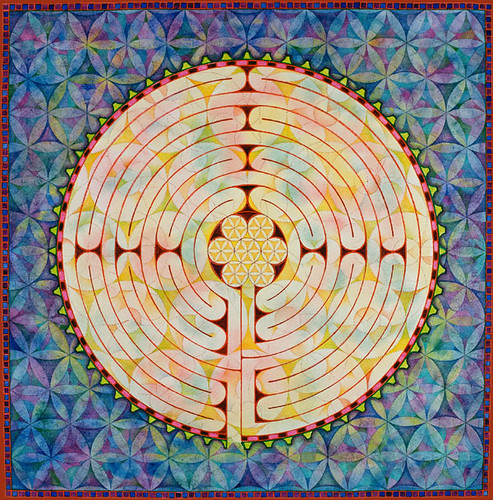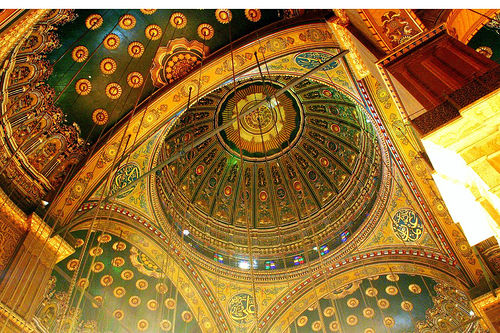Circles can be found in many structures of life: the moon, the Earth’s orbit around the sun, a fruit, a flower, etc. A circle represents wholeness and unity, and therefore, is sacred in many cultures. The word “mandala” comes from the Indian language of Sanskrit, and loosely means “circle.” Here are a few examples of circles have spiritual or ritual significance:
- Tibetan monks and the Navajo create sand mandalas to demonstrate the impermanence of life.
- The creation of mandalas are often used for focusing attention and to aid in meditation.
- Labyrinths are a type of mandala used for “centering” in many cultures.
- The architecture of cathedrals, mosques, and stupas are also built around a center with domes or circular designs.
I’ve become very fascinated with Mandalas over the last several months. I’ve started using them with my students to help focus attention, meditate or reflect, and they are great for self-discovery! Coloring in a mandala pattern or creating your own has a calming effect, so it is great for people with Attention Deficit Hyperactivity Disorder, or even anxiety or people with Emotional Disorders, I believe. I have also tried creating my own mandalas during meetings to help me to pay attention better. Researchers have found that people who doodle during lectures (only when information is given orally!) are able to gain more information.
I also agree that mandalas can be great for self-discovery and as I start to create more I see them change over time. Carl Jung, a psychoanalyst, believed that the mandala represented the unconscious self. Many people believe that when a person draws a circle inside a square, it represents the self.
I cannot show any of my own pictures yet, because mandalas will be a theme in my Christmas presents this year! I hope to start creating some for my Etsy site very soon. However, here are some examples and some coloring pages you can print out to get you or your young friends started, until you are comfortable making your own.
Tibetan Mandala:
Sand Mandala:
Labyrinth:
Mosque dome:





